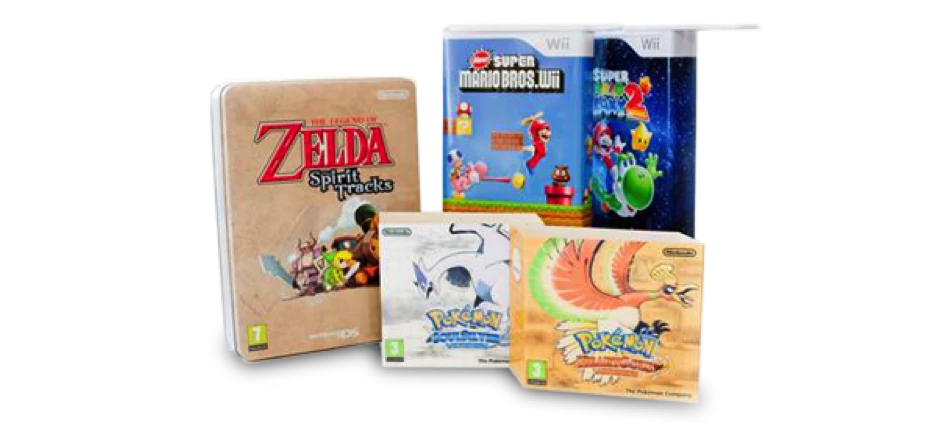
Gaming industry leads in promotional marketing
The current climate has made it difficult for many creative industries to flourish in terms of effectively targeting their market, but certain industries appear to have the upper hand when it comes to promoting their produce. But one industry in particular is at the top of their game (pun well and truly intended) when it comes to this - the game industry. Promotional trails of today’s games resemble that of cinematic trailers with the games themselves being treated with the same level of hype, if not more! So what’s their secret to generating and maintaining such an extensive fan base?
Creating a buzz with the right marketing strategy
Game advertising is more or less ubiquitous in the media. And thanks to modern technology, gaming manufacturers have no end of tools at their disposable to successfully appeal to their demographic. The power of viral ad campaigns and online media alone are a case in point. Members of social networking sites like Facebook and Twitter will share and distribute select images and ‘teaser’ clips amongst users that have surfaced from various sources, often whilst the game is still in production. But even these up-to-speed social networking sites will be late to these developments. Dedicated gamers will have the chance to get an exclusive taste of a newly announced game (or even a recent development affecting their game play) from game-specific networking and blogging sites such as ign.com or gamespot.co.uk. And even once the promotional titbits of a new game are public knowledge, the marketing campaign has only just begun.
Promotional marketing adds an edge
Before and long after a game is released, the marketing is in full swing to ensure the game rarely escapes the public radar. In the months leading up to a release, retailers will typically implement a pre-order offer, allowing buyers to own the game up to 2 weeks before its official release date and pay less than the retail price. Better still is the fact that the customer pays the difference of the discount offer depending on the date of receiving the game. A brand new, highly-anticipated game will usually retail at £35-£40 and while the high price is more than justified, (the game’s reputation, a possible sequel, add-on packages etc) game makers appreciate that the majority of their audience will not always be prepared to pay the full whack. Subsequently, gamers may wait 2-3 months after the release date to allow the game to reduce in price. While most industries would suffer from this, game makers seek a chance to profit from it by releasing special edition packages further down the line and offering demos that players can ‘buy’ with points achieved through playing neighbouring games, which are stored like currency on their consoles. These digital extras via DLC (downloadable content) are very different from more standard promotional gifts such as branded lanyards but to a younger audience they prove more desirable.
Films are screened for a limited time and the hype of a new album will peak and fall at the end of a tour, but games can remain popular for years thanks to endless marketing campaigns. The post-release promotion of a game is just as inescapable with branded clothing and accessories, book adaptations and movie tie-ins and online codes used for the downloadable content of games by the same makers; opening up an endless tree of possibilities for promotional items. Game makers have their marketing techniques down to an art, safe in the knowledge quality is always worth waiting for.
Looking to promote your product/service to SME businesses in your region? Find out how Bdaily can help →
Enjoy the read? Get Bdaily delivered.
Sign up to receive our popular morning National email for free.








 How to make your growth strategy deliver in 2026
How to make your growth strategy deliver in 2026
 Powering a new wave of regional screen indies
Powering a new wave of regional screen indies
 A new year and a new outlook for property scene
A new year and a new outlook for property scene
 Zero per cent - but maximum brand exposure
Zero per cent - but maximum brand exposure
 We don’t talk about money stress enough
We don’t talk about money stress enough
 A year of resilience, growth and collaboration
A year of resilience, growth and collaboration
 Apprenticeships: Lower standards risk safety
Apprenticeships: Lower standards risk safety
 Keeping it reel: Creating video in an authenticity era
Keeping it reel: Creating video in an authenticity era
 Budget: Creating a more vibrant market economy
Budget: Creating a more vibrant market economy
 Celebrating excellence and community support
Celebrating excellence and community support
 The value of nurturing homegrown innovation
The value of nurturing homegrown innovation
 A dynamic, fair and innovative economy
A dynamic, fair and innovative economy